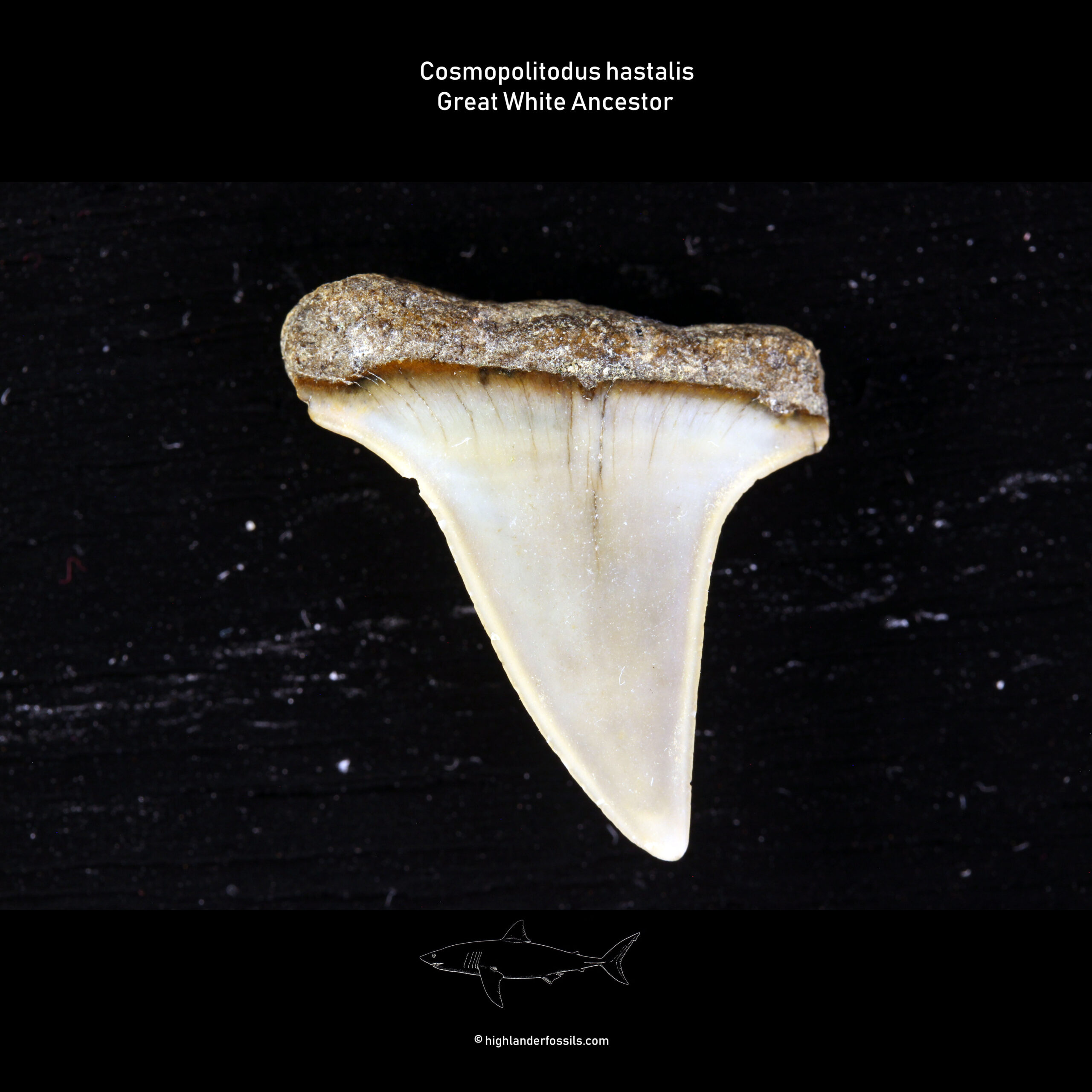Description
About Cosmopolitodus hastalis C. hastalis for sale
Physical Description
As long as there has not been a complete fossilized Cosmopolitodus hastalis found, is it not certain how this animal used to look like. But we do know what the teeth looked like: They are triangular shaped with a root and crown. Depending on the location and minerals present during the fossilization, these teeth can be found in a wide array of colours. The teeth found in Belgium tend to be blueish, greyish or brownish in colour. The size of teeth can also vary and gives an idea of the size of the animal.
Age and Distribution
Cosmopolitodus hastalis is from the Pliocene of Belgium. This shark lived approximately 23-2,6 million years ago. We know that this shark species was very wide spread over the world as teeth can be found in many locations.
C. hastalis co-inhabited the sea with other sharks like the monster shark Megalodon: (Otodus megalodon), Megamouth shark (Megachasma cf pelagios), Sleeper shark aka Greenland shark: (Somniosus microcephalus), Basking shark: (Cetorhinus maximus) and many more sharks. Besides sharks other animals swam in these waters like: bony fish, rays, birds and marine mammals like toothed whales, dolphins and seals.
About the Cosmopolitodus hastalis C. hastalis for sale
Evolutionary Significance
It is widely regarded that Cosmopolitodus hastalis is the ancestor of the Great White Shark, Carcharodon carcharias. The triangular teeth of C. hastalis look almost exactly like those of C. carcharias but without the fine sharp serrations. In certain places in the world like Peru you can find transistional teeth. These transitional teeth have very rough serrations (and one could say they look unfinished). When or/and where the hastalis ceased being and became the Carcharodon carcharias is still up for debate.
Taxonomy
Cosmopolidotus hastalis belongs to the Lamnidae which is a subclass of the Lamniformes. They’re more commonly known as the Makerel sharks. As few other members of the Lamniformes from this time period are: Otodus megalodon, Megachasma cf pelagios, Cetorhinus maximus, Alopias latidens and Lamna nasus.






